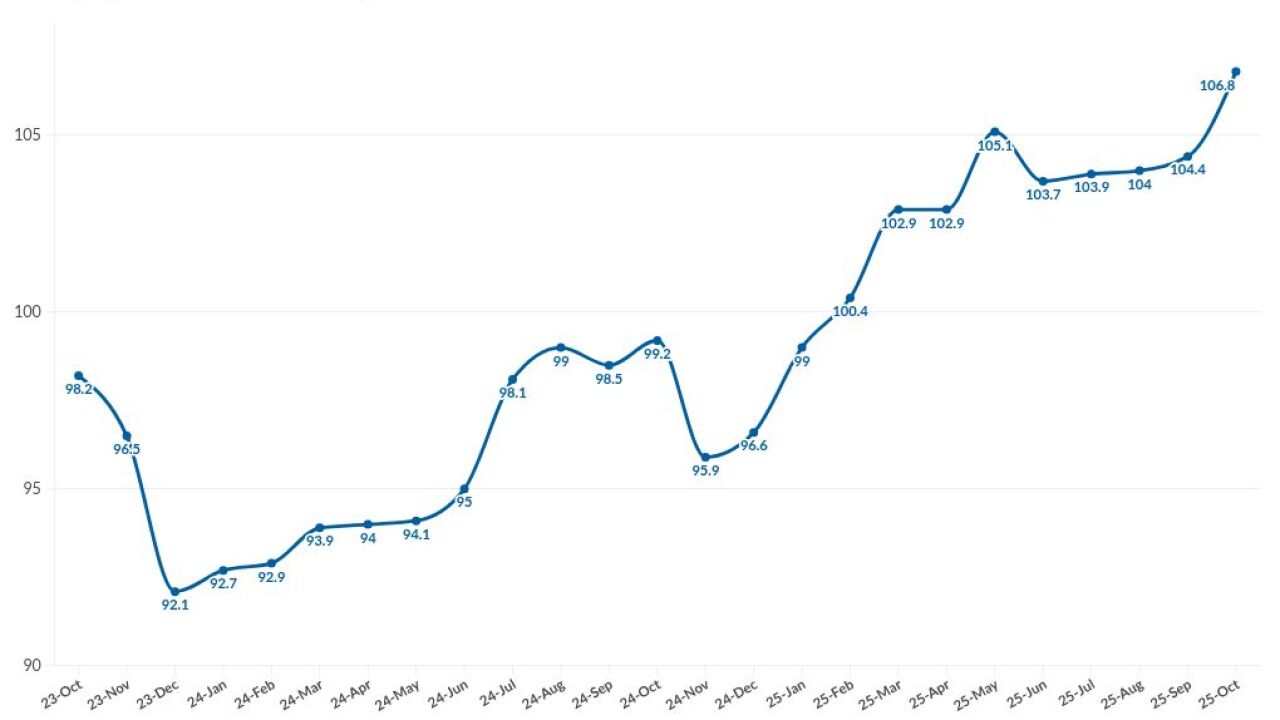Treasuries fell Friday but remained on course for a third straight weekly gain, with benchmark yields near the lowest levels since early May.
Traders squared their positions to start the session, pushing yields up and snapping a five-day rally. Inflation gauges in US economic data were firmer than expected, leading traders to pare bets on interest-rate cuts from the Federal Reserve this year to 62 basis points from as high as 65 basis points on Thursday.
READ MORE:
The yield on the 10-year note was higher by about 3 basis points by mid-morning in New York.
Still, the Bloomberg US Treasury index was up on the week and set to close out its best month since February. The advances have been driven by economic data that reinforced wagers on at least two rate cuts this year and speculation President Donald Trump will name a more dovish Fed chief.
Fed governors Christopher Waller and Michelle Bowman have also signaled in recent days they'd be open to lowering rates as soon as the next meeting.
"The market overshot a bit based on Waller and Bowman language and now we're taking some of this risk off into the weekend," said Ed Al-Hussainy, rates strategist at Columbia Threadneedle Investment.
The market could well find further support from supply-and-demand factors including Monday's month-end index rebalancing, which has the potential to drive buying, and from a gap in the coupon auction calendar until July 8.
READ MORE:
Traders, who currently see a less than one in five chance of a July rate cut, will focus on plenty of fresh data next week, topped by the June employment report. The data is released Thursday ahead of the July 4 holiday. Job creation is forecast to ease to 120,000, down from 139,000 the prior month, according to economists surveyed by Bloomberg. The unemployment rate is seen nudging up to 4.3%, and while still contained, such an reading would mark a fresh peak since 2021.
"There is a little bit of optimism that rate cuts are coming, most of that is driven by governors Waller and Bowman basically referencing that July is in play," Gennadiy Goldberg, head of US rates strategy at TD Securities told Bloomberg TV. He said the rest of the FOMC was split in two camps calling for either two or no rate cuts this year. TD expects the next rate cut to arrive in October as by that stage, the Fed will have enough data on inflation and the jobs market.
"It is going to be a drift lower in rates, and that's why our year-end forecast for 10-years is 4%," he said.
Other
READ MORE:
Traders are also monitoring Trump's proposed 'big beautiful bill,' which is nearing a vote in the Senate. It has fueled
Wells Fargo strategists see the potential for the spread between US 10-year and 30-year yields to widen to 75 basis points by end-2025, in what they describe as a "fiscal blowout" scenario. The difference in yields is currently around 55 basis points.
"We expect very long duration bonds to continue lagging their five- and 10-year counterparts," a team led by Michael Schumacher wrote in a note. "The significant relative rise in 30-year yields is due to investor concerns about potential supply."




